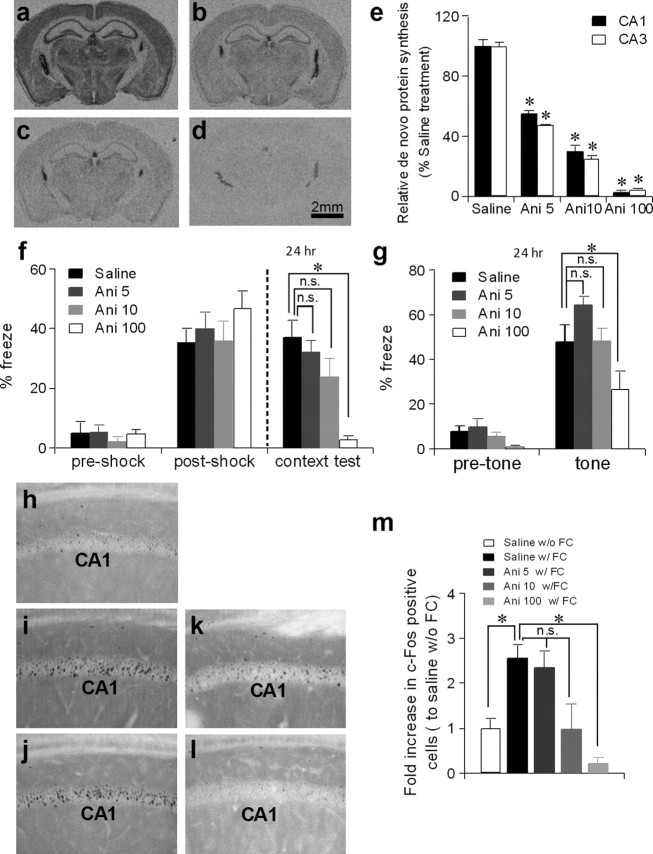Figure 7.
Low-dose anisomycin inhibits general translation with intact fear memory and normal c-Fos induction. a–e, De novo general translation was significantly inhibited when animals were injected with anisomycin. C57BL/6N mice (2–4 months old) were intraperitoneally infused with [35S]-methionine 1 h after they were subcutaneously injected with saline (a) or anisomycin at a dose of 5 mg/kg (b), 10 mg/kg (c), or 100 mg/kg (d). The mean gray value of radioactivity signals of areas CA1 and CA3 were quantified by NIH ImageJ and compared to the saline-injected group (e). Mann–Whitney U test compared to saline-treated group, *p < 0.05. Ani 5, Anisomycin 5 mg/kg; Ani 10, anisomycin 10 mg/kg; Ani 100, anisomycin 100 mg/kg. f, g, Mice were subjected to fear-conditioning 10 min after saline or anisomycin injection. Contextual freezing during the conditioning was similar among groups (f). However, 24 h after training, contextual (f) and cued-fear memory (g) were impaired with injection of 100 mg/kg anisomycin (n = 9), but were not impaired with 5 mg/kg (n = 12) or 10 mg/kg (n = 10) of anisomycin. One-way ANOVA, post hoc Dunnett test compared to saline-injected group (n = 9). *p < 0.05. h–m, C57BL/6N mice (2–4 months old) were kept in home cage (h) or underwent contextual fear conditioning (i–l). Ten minutes before training, animals were injected with saline (h, i), 5 mg/kg anisomycin (j), 10 mg/kg anisomycin (k) or 100 mg/kg anisomycin (l). The number of c-Fos-positive cells in the CA1 cell layer 1 h after conditioning was assessed compared to the number of the controls (saline injected with fear conditioning). Conditioning-induced c-Fos expression was attenuated by 100 mg/kg anisomycin, but not by 5 mg/kg or 10 mg/kg anisomycin (m). Mann–Whitney U test compared between saline-injected with fear conditioning group and other groups. *p < 0.05. w/o FC, Without fear conditioning; w/FC, with fear conditioning. Error bars represent SEM.

